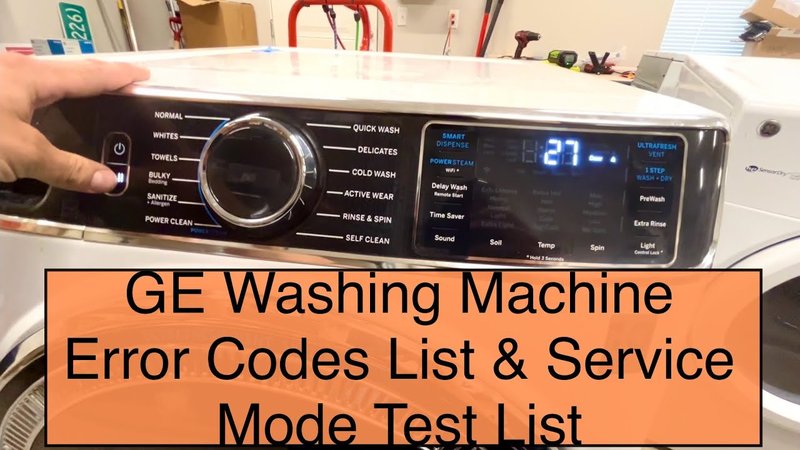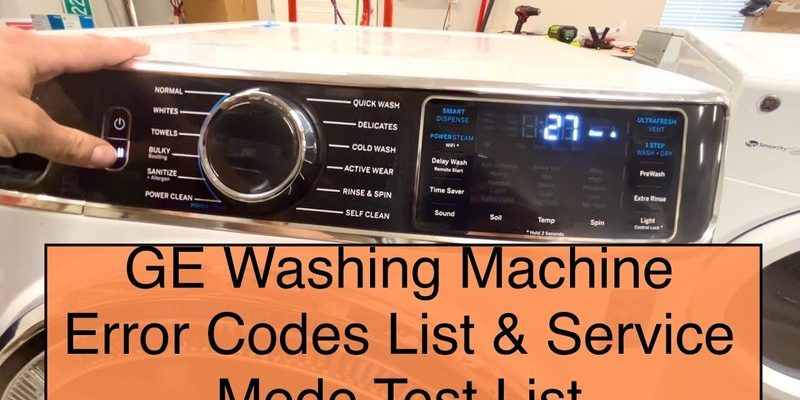
At its core, the “LE” error code on a GE washing machine usually indicates a problem with the water level sensor. In simple terms, it’s like your washing machine is upset because it can’t tell how much water is inside. It might sound serious, but often the issue is something you can address with a little bit of troubleshooting. Just think of it as your washing machine asking for a bit of help to sort out its water level confusion.
Understanding the Water Level Sensor
So, what exactly is this water level sensor? Imagine you’re filling a bathtub; you’d need to know when to stop the water to prevent an overflow, right? That’s essentially the job of the water level sensor in your washing machine. It ensures that the machine has just the right amount of water to get your clothes clean without wasting any. If this sensor isn’t working properly, the machine might freak out a bit, hence the “LE” error code.
The water level sensor uses air pressure to measure how much water is in the drum. When water enters, it compresses air in a tube connected to the sensor. If there’s any blockage or malfunction—like a kinked tube or a clogged air chamber—the sensor might incorrectly signal that there’s an issue, even if water levels are perfectly fine, leading to the dreaded “LE” code.
If you’re thinking, “That sounds like something only a technician can fix,” don’t worry. Sometimes, it just requires a simple reset or a basic check-up. Make sure the machine is level, check for any obstructions in the hoses, and ensure all connections are tight. Often, these small fixes can clear the error and have your machine running like new.
Troubleshooting the LE Error Code
Now that you know what the “LE” error code involves, let’s talk about how you can troubleshoot it. The first step is always the simplest—give your machine a good old-fashioned power cycle. It’s like rebooting your computer; just unplug it, wait a minute or so, and plug it back in. This can sometimes reset the control board and clear minor glitches, including the LE code.
If that doesn’t do the trick, take a closer look at the water level sensor and its tubing. Disconnect the machine from power and examine the hose for kinks or blockages. Much like a garden hose won’t spray water if it’s twisted, a kinked hose can also prevent your washing machine from communicating properly with its water sensor.
Lastly, consider examining the connections and wiring around the sensor. If you notice any frayed wires or loose connections, it might be best to reach out to a professional technician. Safety first! Electric appliances should be handled with care, and if the job seems above your comfort level, a service call can save you time and hassle.
Preventing Future LE Error Codes
Once you’ve resolved the current “LE” error, let’s focus on how to prevent it from happening again. Regular maintenance and a few good habits can keep your washing machine in top shape. First off, always ensure you’re using the right amount of detergent. Too much soap can create excessive suds, interfering with the sensors.
Moreover, make it a point to inspect the hoses and connections every few months. Catching any wear and tear early can prevent more significant issues down the line. Also, ensure your washing machine is on a level surface; if it rocks or tilts, it could strain the connections inside, leading to error codes.
Lastly, consider running an empty cycle with hot water and vinegar now and then. It helps in removing any build-up that might clog the sensors or other parts. Think of it as giving your washing machine a refreshing spa day—it’s a simple step that can go a long way in preventing technical hitches like the “LE” error.
In conclusion, while the “LE” error code might seem daunting at first, it’s often a straightforward fix. With some basic knowledge and proactive maintenance, you can keep your GE washing machine running smoothly and error-free. Remember, even complex appliances appreciate a little TLC!
